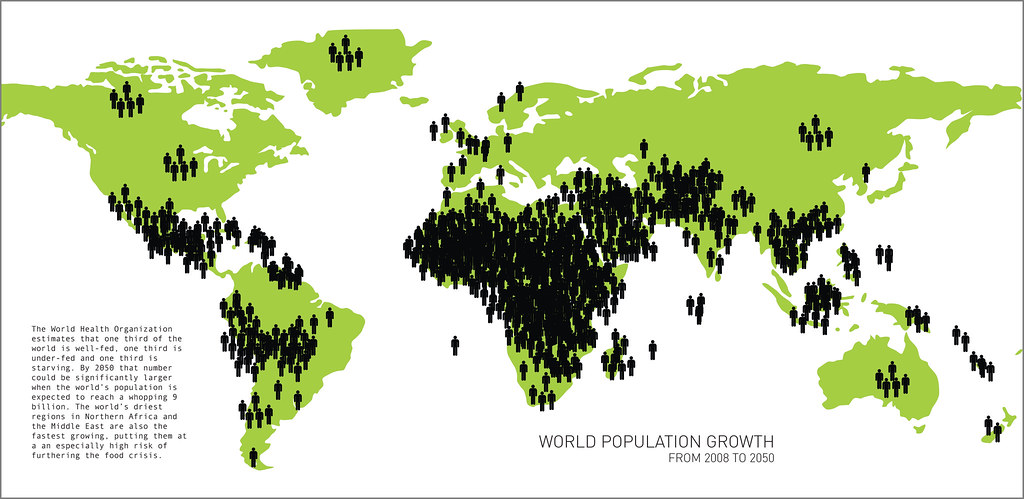The year 1700 marked a pivotal juncture in the historical narrative of world population dynamics. At the dawn of the eighteenth century, it is estimated that approximately 600 million individuals called the earth home. This figure reflects not merely a statistic but an intricate tapestry of societal evolution, economic transformation, and cultural interchange—all of which are infused with theological implications and moral considerations inherent in the Christian perspective.
To comprehend the significance of the world’s population in 1700, one must consider the socio-economic landscape of the time. This era succeeded the initial populational surges prompted by the agricultural revolution and the ensuing advancements in agriculture—a foundation upon which many societies built their economic structures. The burgeoning population was intricately tied to agricultural innovations, which enabled greater yields and supported larger communities. Christians might interpret this as a manifestation of divine providence, where God’s blessings on the earth allowed humanity to flourish. The scriptures echo such sentiments; the command to “be fruitful and multiply” resonates within the Christian ethos, underscoring the theological significance of population growth.
However, the population of 1700 was also marked by stark inequalities. Urbanization began to grow, especially in Europe, leading to the establishment of cities that served as epicenters of commerce and culture. Port cities like Amsterdam and London witnessed dramatic demographic shifts as rural populations migrated in search of improved livelihoods. This migration was faceted not simply by the allure of opportunity but also by the pressing realities of famine and war, which jolted many from their agrarian lives.
In this melee, Christians viewed urbanization through a dual lens of hope and concern. While cities offered a venue for evangelistic outreach, they simultaneously posed challenges of moral decay and societal fragmentation. The Christian community grappled with the ethical responsibilities that accompanied increased populations and urbanization. This is reminiscent of the parable of the Good Samaritan; as diverse populations amassed in urban centers, the command to love one’s neighbor took on renewed urgency.
Moreover, the demographic patterns of this era were heavily influenced by historical ailments. The specter of disease loomed large over populations, evidenced by the recurrent outbreaks of plague and other infectious diseases that decimated communities. The population figures in 1700 encapsulated not only growth but also resilience in the face of adversity. From a Christian viewpoint, such tribulations were often viewed as trials of faith. The teachings of perseverance and hope in times of suffering echoed throughout sermons and lived experiences, offering solace to those grappling with loss.
In the context of mortality rates, the high incidence of infant mortality starkly illustrates the fragility of life during this period. Thus, while fertility rates soared, so too did the rates of death, particularly among the youngest. This paradox serves a reflective purpose within the Christian tradition. Life’s brevity is a recurring theme in scripture, prompting believers to ponder profound questions: How should one live in the face of such impermanence? The significance of nurturing and cherishing each life gained a deeper resonance among Christian communities, highlighting the moral imperative of stewardship over life.
The 1700 population figure can also be analyzed through the prism of colonization and its associated demographic implications. European powers expanded their reach into the Americas, Africa, and Asia, leading to significant shifts in local populations. These movements—often characterized by conquest and colonization—have prompted ethical evaluations within Christian thought. Questions regarding the sanctity of all human life, the implications of power dynamics, and the call to justice emerged as Christians sought to navigate the complexities of empire and morality. The impact on indigenous populations, many of whom faced displacement and even extermination, remains an uncomfortable part of this narrative.
Furthermore, the Enlightenment began to unfold around this period, inviting consideration of human rights, individualism, and inherent dignity. As populations burgeoned, so did the philosophical underpinnings that shaped attitudes towards governance and responsibility. Within this context, Christians began to re-evaluate their roles in society and the world, leaning into the biblical principle of stewardship—an acknowledgment of a collective responsibility to care for one another and the environment.
Thus, the population figures of 1700 are imbued with complexity. They reflect not just numbers, but stories of human tenacity, hardship, and moral quandaries. The myriad interactions between population growth, urbanization, and the socio-political shifts of the time present a landscape that interlaces history and theology. The common observation of humanity’s growing numbers conceals deeper undercurrents of socio-economic cataclysms, spiritual aspirations, and ethical dilemmas that invite both scholarly inquiry and reflective contemplation.
In summary, as we grapple with the implications of a growing global population today, echoing the lessons and moral reflections from the past becomes vital. The population of the world in 1700 is not merely a historic statistic but a call to examine the nature of existence, morality, and the weight of the human experience as viewed through the lens of faith. As Christian scholars and believers reflect on the demographic shifts of history, they engage in a dialogue with the past, seeking to illuminate the path toward a future that honors the intrinsic dignity of every life created in the image of God.



